In some ways it seems fitting that the 500th blog has the Centre for Kent History and Heritage (CKHH) even busier than ever. Furthermore, programme details of all the events (talks and guided visits) for Tudors & Stuarts 2025, which will be from Friday 25 April to Sunday 27 April, will be going to Ben Cornwell and Kellie Hogben on Monday so that they can set up respectively the programme on the CKHH web site and the CCCU booking system of Arts and Culture, thanks in advance to both of you.
Additionally, just looking forward to next week to members of the Kent History Postgraduates Group, Kieron Hoyle and Jason Mazzocchi will be offering poster presentations at the joint KAS Maritime Kent Research Group’s and Chatham Dockyard’s Shipbuilding conference on Thursday 7th and Friday 8th November: https://www.kentarchaeology.org.uk/events/maritime-kent-conference-2024-shipbuilding Jason will be focusing on his research concerning merchants and oystermen at Faversham, while Kieron will highlight the importance of maritime victualling at Tudor Dover. Then on the Saturday I’ll be looking after the CKHH stall at Canterbury Society’s Heritage Expo: https://canterburysociety.org.uk/event/heritage-expo/ which follows on from a similar event a couple of years ago organised by Professor Mark Connelly (University of Kent) in Canterbury: https://blogs.canterbury.ac.uk/kenthistory/mcw2022-and-kent-gateway-to-the-world-history-festival/ and the Medway History Showcases which for the last few years have been held at the Royal Engineers Museum at Gillingham and organised jointly by the Museum and Peter and Jane Joyce. This was the one in 2024: https://blogs.canterbury.ac.uk/kenthistory/mhs-24-and-kas-historic-buildings-the-ckhh-out-and-about-in-kent/ . Then on Monday 11 November another member of the Kent History Postgraduates group will be giving the lunchtime talk at the Kent Archives at Maidstone. Having recently successfully completed her Masters by Research – congratulations Victoria – Victoria Stevens will be speaking on ‘The Clue is in the Title: ownership, fashion and society reflected in a Kent private library’: https://www.kentarchives.org.uk/lunchtime-talks/ and she is now intending to do her doctorate.
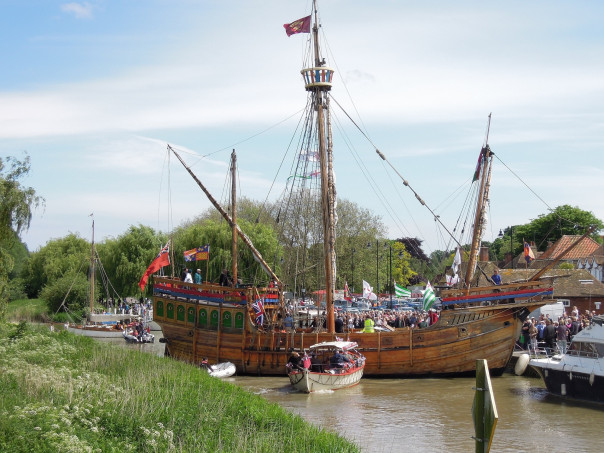
Coming back to this week I want to mention the reach of CKHH that since last weekend has encompassed Almondbury (Yorkshire) in the north, Wells in the west, Cambridge in the east and Dover in the south. This means I won’t be able to include a long report for each but will mainly focus on what I think are some especially interesting features. Starting at Almondbury, this was the second time I have spoken to a group there. Last time in 2022 it was to mark the 500th anniversary of the construction of the wonderful painted ceiling in All Hallows parish church and this time it was at the invitation of Dr Jill Mitchell for the Almondbury Local History Group where I was exploring ‘Going to church in Almondbury and Yorkshire in 1522’. For the purposes here, I just want to focus on the likelihood that the Jesus Mass would have been celebrated, probably every Friday, at the parish church. The reason I think this occurred is threefold. Firstly, the church had been appropriated by Archbishop Thomas Rotherham for the foundation of his College of Jesus in 1483 at Rotherham, and as the holder of the advowson at Almondbury, his parish priest might have been expected to follow his patron’s lead. For even though the first reference, as far as I know, to a guild of the Jesus Mass in Yorkshire comes from Pontefract in 1515, this does not rule out the possibility of this Mass being celebrated at early Tudor Almondbury, as well as the presence of a Jesus Mass Fraternity.
Secondly, albeit the stained glass in the Lady Chapel/Kaye Chapel was restored in 1879, if the saints depicted reflect those from the 15th century, there is a concentration on the Holy Family. Now I appreciate that this is not unusual in a Lady Chapel. Yet is still suggestive of a concern for Christ’s humanity within the devotional life of the church which could easily extend to the celebration of the Jesus Mass these, especially because this Mass was favoured by members of the gentry, entirely appropriate at late medieval Almondbury.
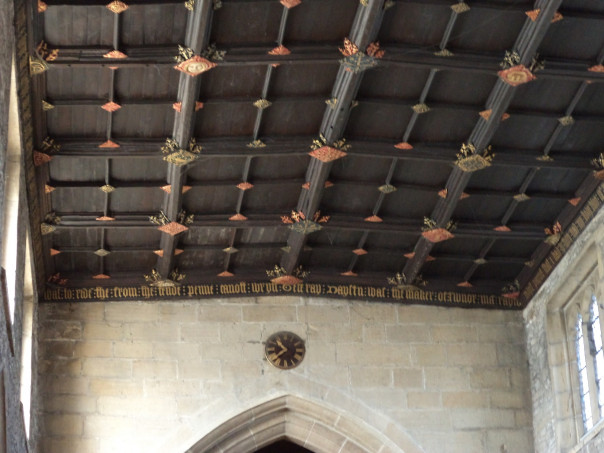
I think the presence of the painted ceiling, as my third point, while not clinching the case, is highly suggestive because of the iconography displayed. For not only are there the many instruments and emblems associated with Christ’s Passion, but the HIS is extremely prominent. If I am right and this important votive Mass was celebrated there, I think we might quite easily extend such communal piety to the idea that this iconography could offer Almondbury parishioners a means to engage in personal meditation. Such verbal or mental repetition of the ‘Name of Jesus’ might be seen as reflected in the works of writers in Middle English such as the 14th-century mystic Richard Rolle, as well as echoed in the ceiling’s inscription, thereby having the potential to aid those seeking a visionary experience through their emotional response to Christ’s sufferings. Thus, aspects of communal worship and personal affective piety may have been manifest in 1520s Almondbury among the congregation there.
If we now move west to Wells, I joined academics from Exeter, Kent, London and Wells itself for a centenary event, a symposium on Bishop Bubwith of Wells who died in 1424. Among the bequests in his will was one of 1000 marks to build a library at the cathedral for the chapter of secular canons, the vicars choral having their own library in their close. Consequently, the symposium explored books, libraries and education at Wells and in the context of late medieval England and the Renaissance. So what might be seen as the centre and working outwards, Dr Des Atkinson examined the career of Bishop Bubwith as that of a late medieval high ranking cleric, while Professor Nicholas Orme discussed the provision of education at Wells throughout the Middle Ages and how this altered over the period to accommodate liturgical changes as well as the desire to educate boys for university and the priesthood. Building on from this, Dr David Lepine explored the scholar canons who were members of the chapter in the 15th century, including the books they had, the university colleges they attended/supported and other influences that coloured their intellectual interests. To offer a contrast from monastic cathedrals, I provided an assessment of Canterbury using cathedral chantry and other chaplains in the light of their book bequests, as well as drawing on Dr Paul Lee’s work for Rochester and its environs.
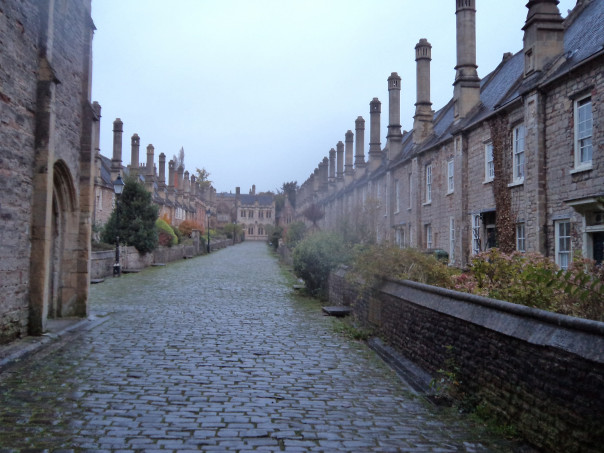
Taking the books, Veronica Howe, the archivist at Wells Cathedral, provided an assessment of what we know, not much from documentary sources instead mainly archaeological, about Bubwith’s new library as a physical structure. Dr Nigel Ramsey offered a context by looking at Wells in relation to cathedral libraries more broadly both at the monastic cathedrals and at those staffed by secular canons. Professor James Clark examined the cathedral’s library from a different standpoint by assessing the Wells library before and after Bubwith’s intervention in contrast to other libraries at religious houses in Somerset – Wells having far more books than anywhere else. Using John Leland’s inventory from Tudor times, he also examined the categories that were to be found at Wells, including the collection pre-Bubwith, those from his period and what came from his successors, as well as noting what categories Leland didn’t mention.
As I hope you can see, the papers in a sense talked to each other and Dr David Rundle’s similarly engaged with Wells’ intellectual place in late medieval Christendom and specifically linkages with Renaissance Italian cities, specifically Florence. For as he said, Wells was impressively well connected and like Bubwith one of his successors Bishop Beckington (Bekynton) was both a Renaissance patron and significant book owner. Furthermore, these senior clerics as intellectuals, by aiding translators and writers who were also part of this transmission of ideas from the classics, might be seen as expanding such ideas beyond the cathedral close to encompass the city. Moreover, I and I’m sure all the other speakers would like to express their gratitude to all those at Wells Cathedral who made us so welcome. Very many thanks it was a great pleasure to be part of these exciting celebrations and from the great number of questions from the audience, of considerable interest to them too.
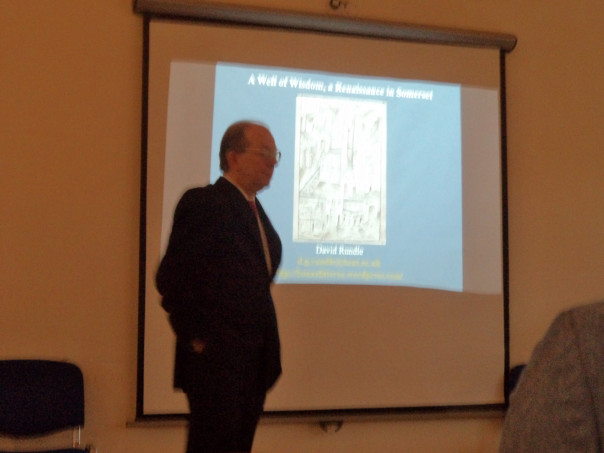
As I hope you can see these provided a fascinating two days and moving on to Cambridge, I joined Dr Nigel Fletcher-Jones, one of the trustees of Eastbridge Hospital on a research trip to Corpus Christ College Cambridge to look at their holdings on Eastbridge in the Parker Library. In addition, we were keen to see material that the college holds on pilgrimage and Thomas Becket because that will be at the central focus of the new exhibition that we want to produce for the hospital. Eastbridge’s central position on the High Street is ideal and hopefully it will become a highly valued part of the city’s history and heritage offering to residents and visitors alike. More on this as things develop and our thanks to Genny Silvanus and Tuija Ainonen at CCCC.
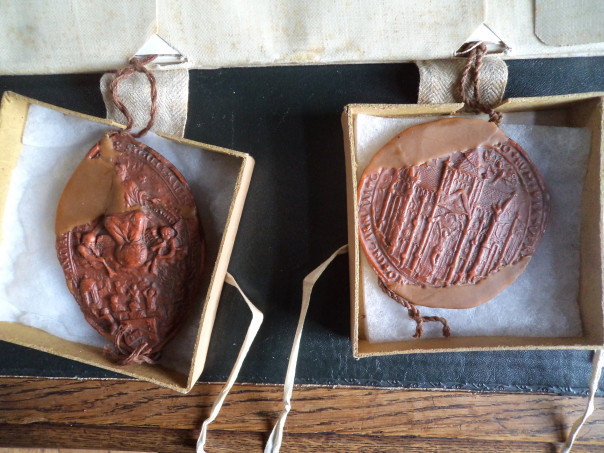
Going south to Dover this too relates to future displays for those wanting to find out more about the town’s history and heritage. Consequently, I joined Martin Crowther, Keith Parfitt, Jon Iveson and Alison Cummings to discuss the new model of the Maison Dieu that will be made by a model maker from Sussex. For even though it might be envisaged as straightforward using the building itself, visual and documentary sources to put forward what it looked like in c.1300, it is difficult because of such questions as did all or part have an under croft, what depth might it have been, how did buildings fit together, especially were there gaps between building, did they abut up against each other completely, what do we know about windows and doors. This was a fascinating discussion and by the end Jon felt he had a working proposition, albeit the model may need to simpler than first envisaged. The idea is that it will be ready for the re-opening of the Maison Dieu next Easter time.
So next week we’ll be staying in Kent but good to see the CKHH contributing to history and heritage in a great variety of ways both locally and regionally.
 Centre for Kent History and Heritage
Centre for Kent History and Heritage Sheila Sweetinburgh
Sheila Sweetinburgh 1858
1858


Congratulations on 500 blogs! Every one a gem and many thanks for the extraordinary amount of work, endless visits and lectures that has been behind it all. Another 500 …?
Thanks Imogen and no!